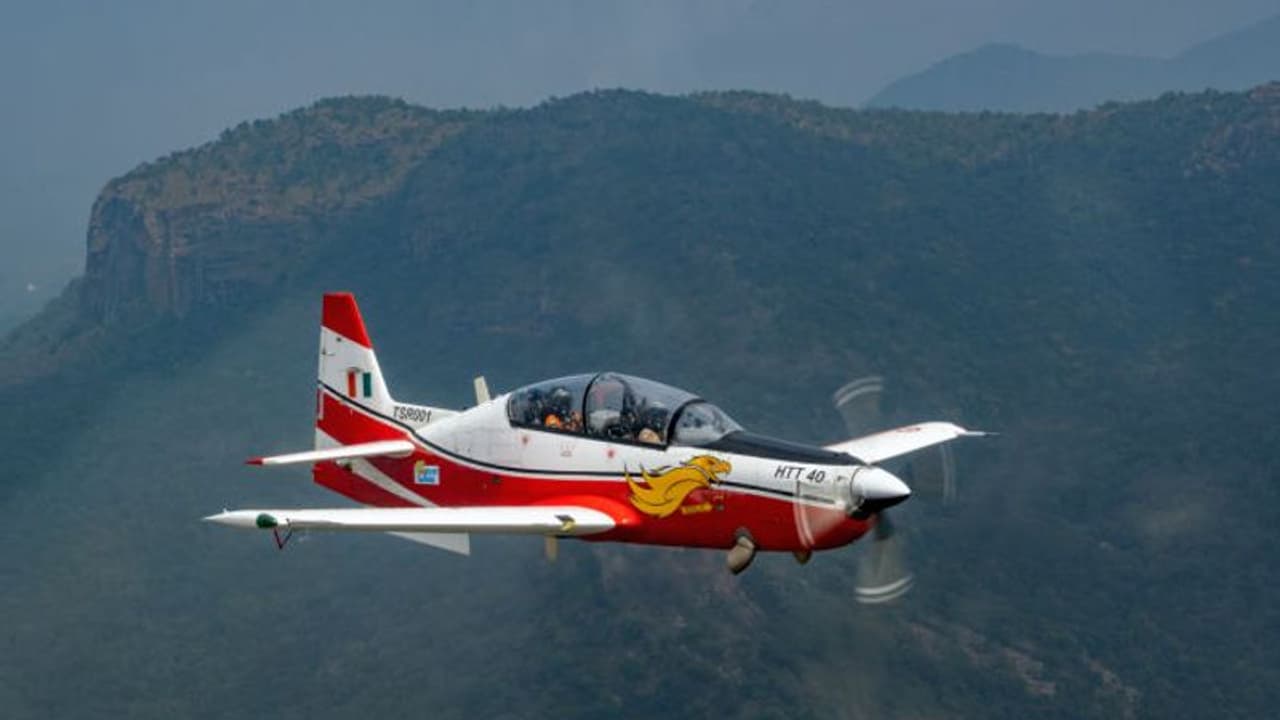The focus on self-reliance should not come at the cost of quality and efficiency, particularly in crucial sectors like defence, says Girish Linganna
The Indian Air Force (IAF) has finally agreed to purchase the HTT-40 indigenous trainer aircraft, which it has been rejecting for several years. Hindustan Aeronautics Limited (HAL) designed and developed the HTT-40, which is intended to replace the IAF's ageing fleet of Hindustan Turbo Trainer-32 (HTT-32) aircraft.

Govt clears purchase of 70 HTT-40 trainer aircraft, 3 cadet training ships
The HTT-40 is a basic training aircraft that can perform various roles, including aerobatics, instrument flying, and navigation training. It has a maximum speed of 450 km/h, a range of 1,000 km, and can fly at an altitude of 6,500 metres. The aircraft has a glass cockpit and an ejection seat and can carry weapons such as rockets and bombs. The IAF intends to utilise the trainer aircraft for a wide range of training purposes, including fundamental flight training, aerobatics, close formation flights, instrument flying, navigation, and night flying.
HAL's HTT-40 vs Swiss PC-7: A Look at India's Training Aircraft Saga
The IAF had initially refused to buy the HTT-40, citing concerns about its technical specifications and performance. The IAF preferred foreign-made aircraft over indigenous ones, which resulted in HAL's rejection of the HTT-40 project proposal in 2011.
In 2012, HAL proposed to develop a training aircraft for the Indian Air Force (IAF) and Ministry of Defence (MoD), but their offer was turned down due to the higher cost of the HTT-40 compared to 75 Swiss Pilatus PC-7 Mk II trainers that were under consideration for purchase.
In 2014, the IAF released a Request for Information (RFI), inviting Indian companies to submit bids in partnership with Pilatus to supply 106 PC-7 Mk II trainers. Eventually, a deal for the Swiss aircraft was signed for Rs 2,900 crore. However, the deal was for only 75 Swiss trainers out of the required 183.
HAL suggested that the IAF purchase 108 HTT-40 trainers to complete the fleet. The IAF preferred to exercise the option to procure an additional 37 PC-7s from Switzerland instead of buying the indigenous HTT-40s. A campaign against the HAL's HTT-40 ensued, with the IAF consistently resisting the indigenous trainer in the following years.
The IAF preferred the PC-7 as it is a well-proven and reliable training aircraft that has been in service with air forces around the world for several decades. It has an excellent safety record, low operating costs, and is easy to maintain, making it an ideal choice for the IAF's training requirements. Additionally, the PC-7 is capable of performing a wide range of tasks, including basic and advanced training, aerobatics, and formation flying, which makes it a versatile aircraft.
The IAF's preference for the PC-7 is understandable, given its proven track record and reliability, and it is important to ensure that any new aircraft being considered for procurement to meet or exceeds the capabilities of the PC-7.
However, HAL continued developing the HTT-40 and resolved the IAF's concerns by making several improvements to the aircraft. With focus on the 'Make in India' initiative under the BJP-led government, the HTT-40's acquisition grew significantly and the IAF planned to induct 70-80 of these aircraft. The HTT-40's production and delivery are expected to commence by 2023.
The HTT-40's development and procurement highlight the benefits of indigenous design and production, as it saves foreign exchange and creates employment opportunities in the country.
The Debate on Quality vs Domestic Production
In the context of HAL's HTT-40 program, the Indian government's emphasis on self-sufficiency and domestic production in defence equipment is commendable. However, it is important to remember that this should not come at the expense of the quality and efficiency of the aircraft.
It is worth noting that in the past, countries like the Soviet Union and China attempted to develop their industries by making everything themselves, including defence equipment. However, this approach often resulted in subpar products and delayed timelines due to lack of expertise and resources.
India, with its push for indigenization, could face similar challenges if it continues to prioritise domestic production over the acquisition of foreign technology and expertise. While self-reliance is a laudable goal, it should not come at the cost of quality and efficiency in crucial sectors like defence.
During the Cold War era, the Soviet Union aimed for self-sufficiency in defence production and prioritised indigenization over the acquisition of foreign technology. However, this approach often resulted in inferior products and missed timelines, as the Soviet Union lacked the expertise and resources to develop some of the critical technologies. The result was a military-industrial complex that struggled to keep pace with the advancements in the technology of Western countries.
Similarly, China, under its Communist leadership, has followed a similar path of developing its industries domestically, which has helped China emerge as a global manufacturing hub. However, China has also faced issues with quality control and delayed timelines due to the lack of expertise and resources in some areas. It is important to note that China has made significant strides in acquiring foreign technology and expertise in recent years, which has helped it overcome some of these challenges.
In the case of India, the push for indigenization has been driven by the need to reduce dependence on foreign suppliers and promote the growth of the domestic defence industry. However, the focus on self-reliance should not come at the cost of quality and efficiency, particularly in crucial sectors like defence.
It is essential to strike a balance between the development of domestic capabilities and the acquisition of foreign technology and expertise to ensure that India's defence capabilities are not compromised.
The author is a defence and aerospace analyst
